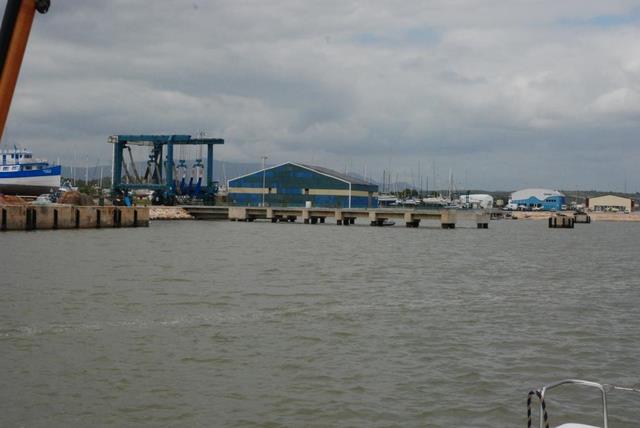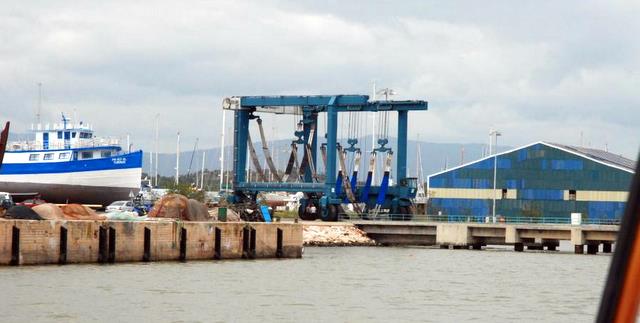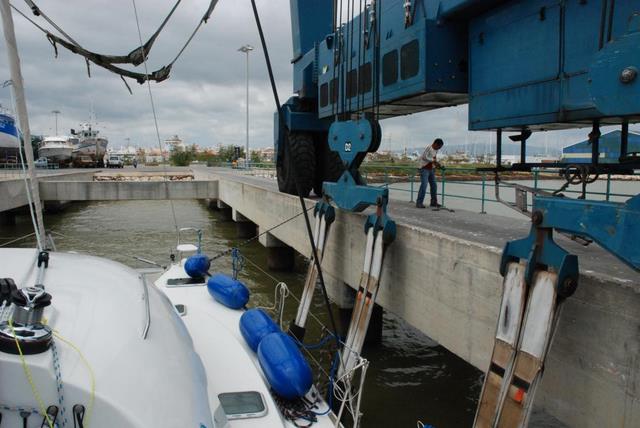He still has the same antifouling and has never been hauled out and dried and been inspected outside the water.
So it was about time to do that.
Especially since the next trip was planned not earlier than September.
My boat is male, since it is named after Lino a male cat :-)
He is 11,55m long (38feet) and 6,55m wide and weighs aprrox 10 tons.
It was decided to get it hauled out in Portimao Portugal and use Bluewateralgarve for the work to be done. There is the Marina only 5 minutes away where you can arrive and directly talk to bluewateralgarve since they have an office in the marina.
There they will tell you the exact haul-out time, if not already known.
Usually it will be during high tide.
This how the approach to the boatyard looks. On the rights side there is the fishing harbour.

Do not forget to take the speed-sensor out before hauling out, since it might get damaged.
We emptied the watertanks besides 100Litres but we kept dieseltanks full to prevent condensation.
Empty the blackwater tanks before hauling out!

Wind was coming from portside with 10-15kn and we had lines out on that side to keep LinoCat in the middle.
Fenders were kept ready but unused. Lines and boathooks where also kept ready.
My brother and myself did all the driving and handling. With one person it would have been tricky.

Also on both side they had 2 more guys making sure nothing is damaged.
The blue covers on the belt are put on by the workers not to have the "dirty" belts directly on the gelcoat.
A very nice and good thing since otherwise the hulls might get scratches very easily.
They also have a smaller crane available for mono-hulls.
The underwatership looks like this since the boat has been in the marina now for 6months without beeing moved a lot.
Also if you check the manual it clearly shows that the belts should not go vertically up.
So using such a big crane is less stress for the boat since the belt-angles are nice.
You can clearly see that the hole belt systems are adjusting to the angle of the underwatership by rotating asccordingly.
By the way, they are doing frequent haulouts of Lagoons since the Portimao marina is a Lagoon base. You even get 10% discounf for Lagoons in the marina.
It finished as #2 in the around the world race.
This is how the props looked before first cleaning.
The keels are already cleaned. In fact, make sure the clean the lower part of it before the put the boat down on the wooden blocks, so that nothing is squeezed in there and that you can prime and paint this part before putting the boat back in.
The Zinc anodes will be replaced, oil change of saildrives done, etc.
The mussels actually pretty much blocked the cooling water inlets at the saildrive.
It will be rinsed with freshwater every 2 weeks due to the dirt in such a boatyard.
LinoCat looks small compared to the big boats around :-)
Is there a part missing or does it alyways look so open?